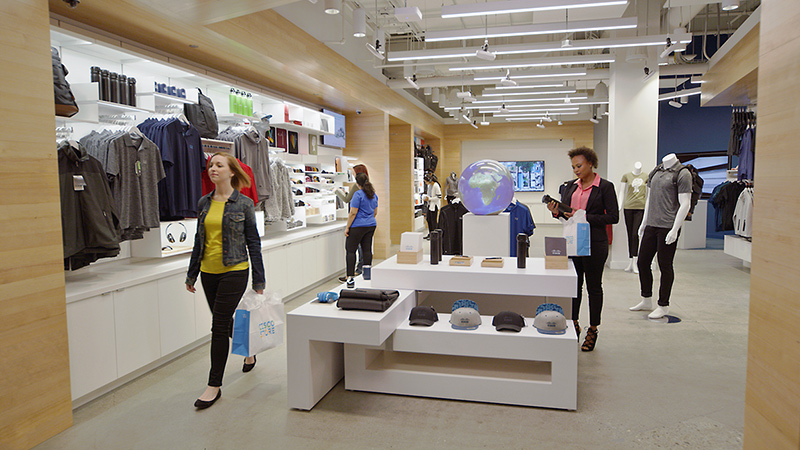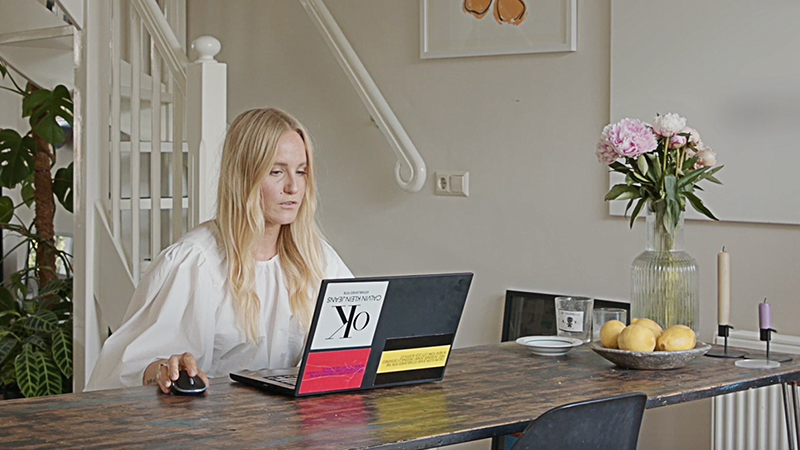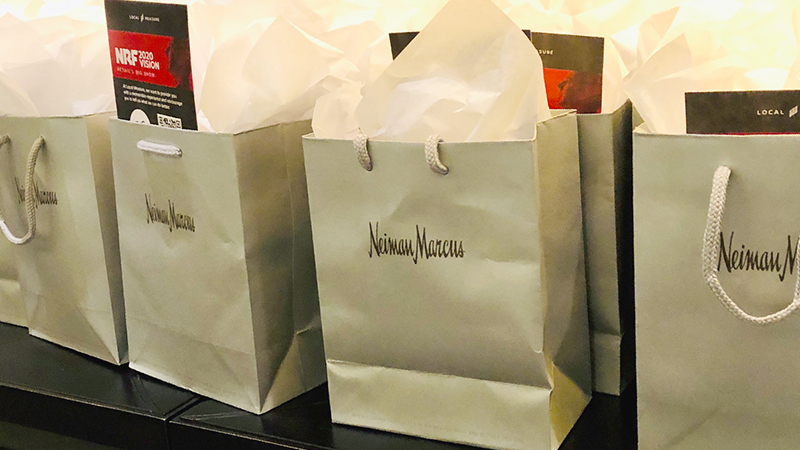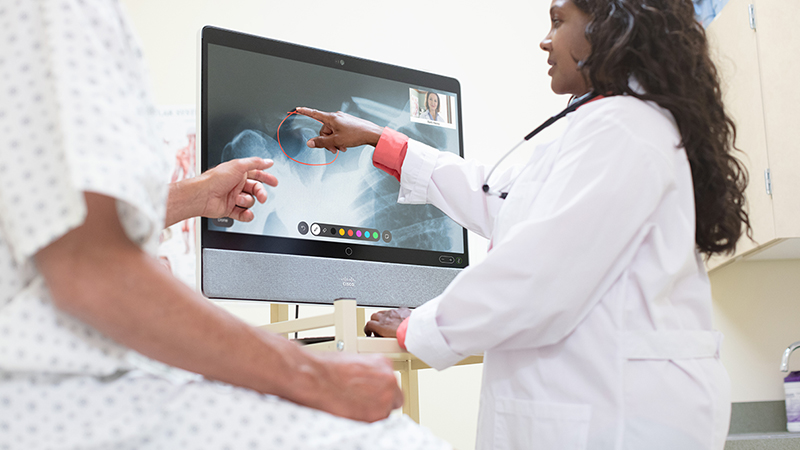Cisco’s retail spot, the Connected Cisco Store in the San Jose campus’ Building 11, is outfitted with some of the company’s latest solutions for the ideal shopping experience. The aim of the store is to provide visitors with a best-in-class experience, but also to serve as a demo space and a living lab for partners and customers interested in the future of retail.
Newly remodeled in 2018, the store uses Cisco technology and solutions from the company’s vast partner ecosystem to provide things like smart dressing rooms, connected sensors, and seamless payment.
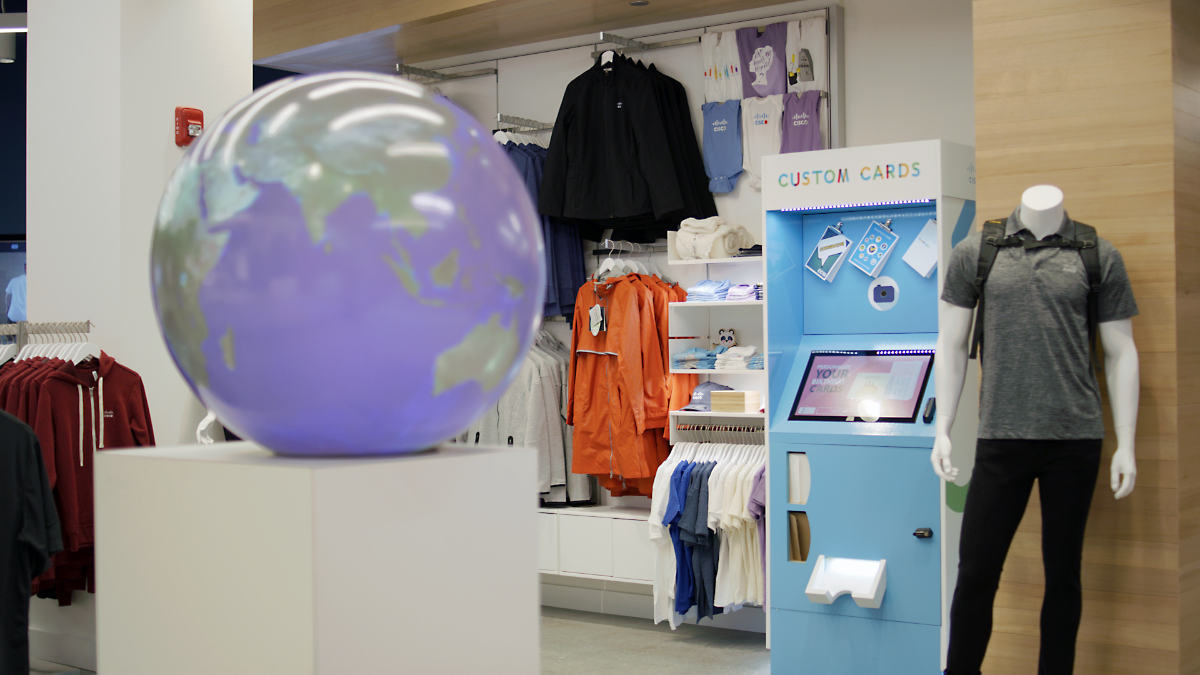
When you’re walking through the Connected Cisco Store, brightly colored merch bounces off the white walls, showcasing neatly placed hats, clothing, water bottles, headphones, and more. Technology quietly outlines the store, efficiently helping both customers and associates get what they need.
“We have a physical store in Cisco’s San Jose and Raleigh offices,” says global program manager for the Cisco Store program Rachael Weiss, “There’s a global online store, a specialized European online store, plus travel popup stores at Cisco Live US and Cisco Live Europe conferences. With the launch of the Connected Store, we also built out a virtual experience, and we’re also partnering with the sales organization on customizing the store for high profile customers.”
Customization is a huge part of the Connected Store experience. As a living lab, the store uses appropriate technology to “plug and play”.
“As new tech emerges we’re going to use the store as a testing ground,” says Justin Brocato, Global Marketing and Brand Operations Lead, “We’re continually looking at how to plug and play different technology.”
Employee empowerment
Cisco Meraki cameras work with Asynchrony Software so that sales associates around the store can have a real-time look at what’s happening. The Meraki MV12 cameras are used for all video surveillance throughout the store, in front and back of house. Meraki security cameras are not only simple to roll out and manage, but all of the video footage it records is kept in the cloud for easy monitoring without extra software. Because video storage is in the cloud, this also means that other network activities get the bandwidth they need.
A 70-inch Webex Board is in both of the two physical locations and in the vendor partner’s warehouse. Associates can use it to collaborate between one another. DOMO Analytics is used to visualize real-time sales data so associates know what items are selling.
Customer experience
Shoppers can look for the kind of merch they need with StoreAdvise, a platform for shops that helps automate things like sales, fitting room management, and inventory fulfillment. Smart fitting rooms are equipped with a tablet that allows shoppers to look for specific styles and sizes, with an option to ask an associate to bring it to their fitting room.
“Cisco Vision Dynamic Signage is on every screen in the store, including the smart fitting rooms,” says Brian Domine, who helped deploy all tech solutions for the Cisco Store, “Plus, all of the merch is RFID tagged. If a customer takes an item out of the store without paying, the associate will be notified and a message will appear on all of the Cisco Vision screens.”
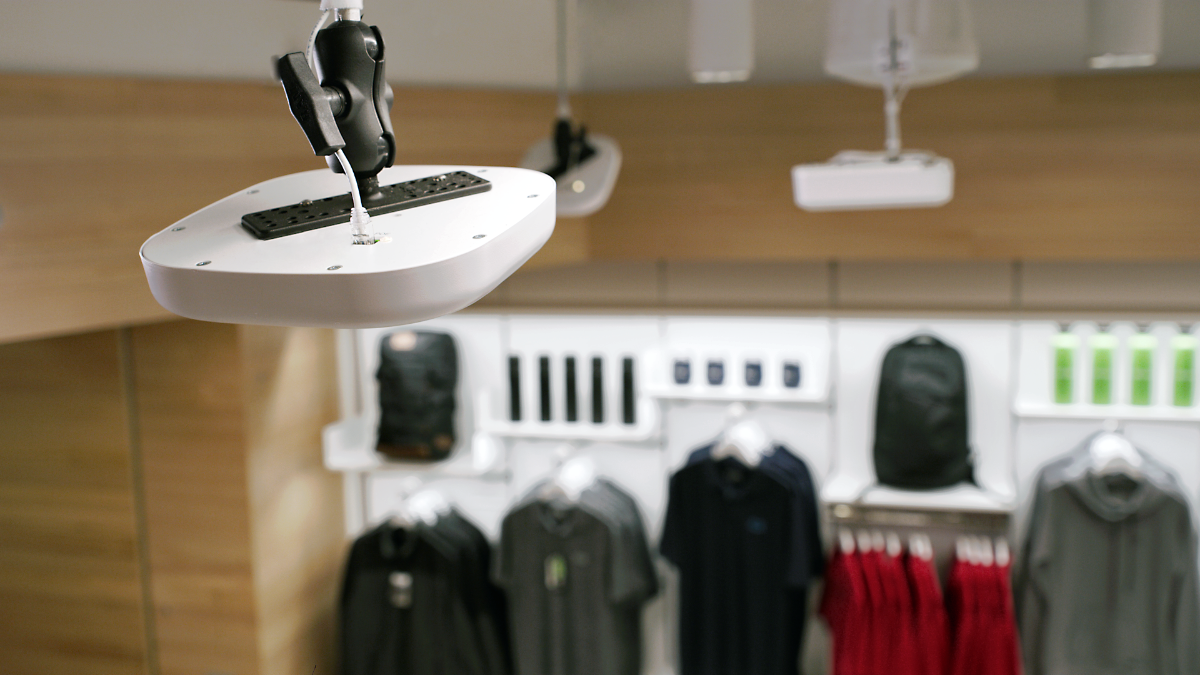
Intel sensors connected to Cisco network automatically track items in the store. When customers purchase something, these IoT sensors register the purchase so that the store is up-to-date and the inventory is adjusted.
For the social-friendly, the Connected Store leverages FanKave to amplify real-time user generated content across digital channels to create engaging experiences by dedicating one screen to all social conversations about the shop. Everyone who hashtags #ciscostore will have their post populate in real-time on this screen, as well as on the ticker on the fitting room mirror.
Frictionless payment
The Connected Store works with MishiPay to provide a mobile self-checkout solution—customers can pay for merchandise with their phone and walk out, as quick and easy as online shopping.
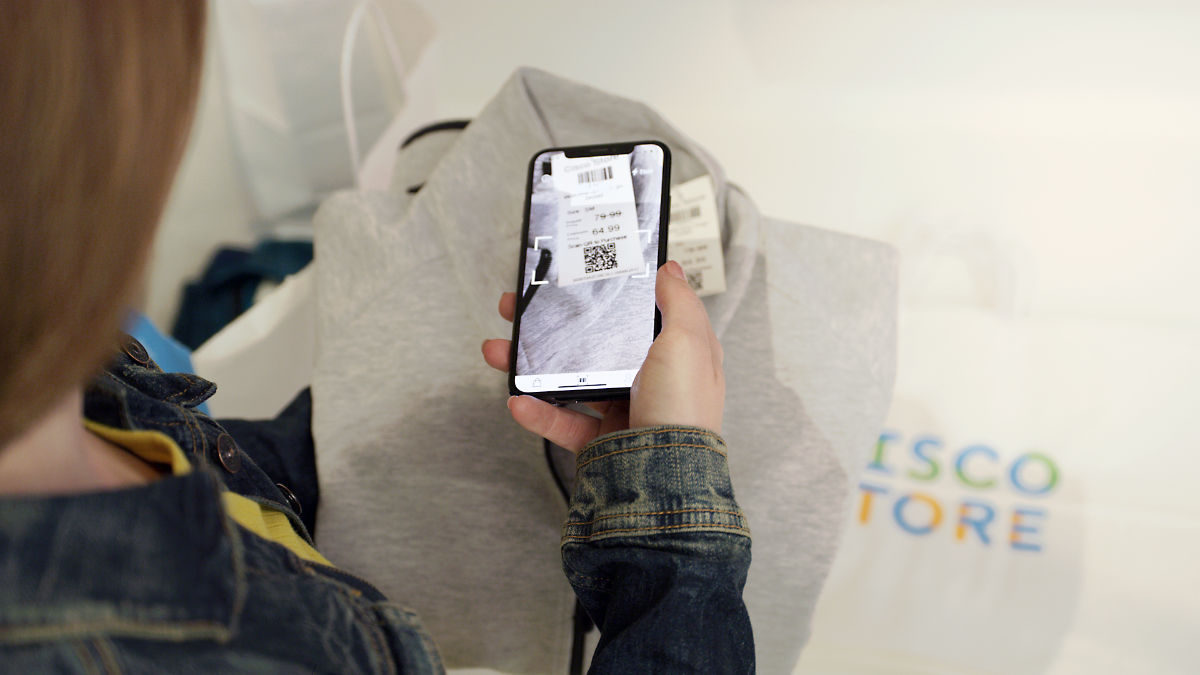
Shoppers can scan items with their smartphone and pay through the app with credit or debit, Apple Pay or PayPal. MishiPay is connected to the item’s security tag, automatically disabling the retailer’s alarms once the purchase is made so the customer can simply walk out.
The future of the store
Looking at the Connected Store within Building 11, one would never guess it incorporated as much technology as it does.
“We want it to be like real life,” says Weiss, “We are a real retailer, so all of the stuff is there, but it’s seamless and you don’t notice it until someone points it out.”
For big retailers, Cisco understands the need to incorporate new technology in quick and easy ways.

“We understand the pain points of retail when you have acquired a ton of stores and they all have different tech stacks,” says Weiss, “You can bolt the Cisco solutions on existing tech stacks for a dramatic change—to not only customers, but associates and operations in the store.”
Looking ahead, the Connected Store team may be looking into smaller versions of the shop to bring to global locations. At Cisco Live US 2018, the Connected Store unveiled a mini-store pilot that operated like a vending machine. The smaller-scale store allowed customers to walk in and pick up whatever they wanted—and if they left with it, they would be billed.
This type of store could be a solution to having Connected Stores in Cisco offices worldwide.
“The Connected Store is a great example of Cisco’s technology and use,” says Brocato, “And one that everyone can relate to.”
###
We welcome the re-use, republication, and distribution of "The Network" content. Please credit us with the following information: Used with the permission of http://thenetwork.cisco.com/.
